Human colonisation of Hawaii, the Mascarenes and New Zealand has resulted in the extinction of more than two thirds of native species. Scientists are exploring how the disappearance of endemic birds has impacted unique island flora.
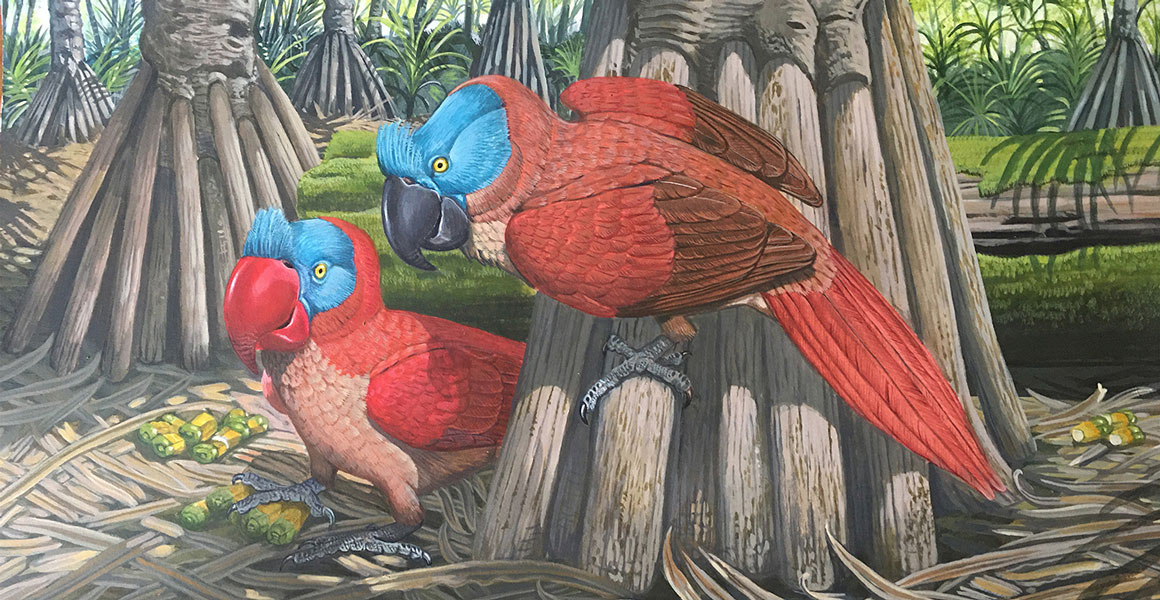
The broad-billed parrot was a large, ground-dwelling bird endemic to Mauritius. It became extinct in the seventeenth century due to deforestation and predation by invasive species, which included pigs, rats and monkeys. © Illustration by Julian Hume.
Islands are home to a higher number of endemic wildlife (animals and plants that only live in one place) than continents. The number and proportion of native species increase with the size, isolation and variety of landscapes on the island.
For example, the Hawaiian Islands are the peaks of undersea mountain chains formed by volcanic activity over a hotspot in the Earth's mantle. Located around 3,000 kilometres from the nearest continent and spread over 2,400 kilometres, 90% of the species exist exclusively on the eight main islands, making it a nexus of exceptionally rich biodiversity.
Julian Hume, a palaeontologist at the Museum and artist specialising in extinct island birds, says, 'Despite popular beliefs, most island species are generalists and will take advantage of anything because they have to.
'Islands have limited food resources which are also very seasonal, so the wildlife there, including introduced species, are already geared up to take advantage of a variety of food.'
Although there are lots of different animals and plants that live on islands, there is usually only a small population of each species. This makes them vulnerable to extinction, especially when new animals and plants arrive.
Julian says, 'The problem with introduced species is they usually take over at a very fast rate and the native wildlife just can't cope with that.'

The small and easily caught Mauritian wood pigeon became extinct around 1730, most likely due to overhunting, predation by rats and deforestation. Illustration © Julian Hume.
The forgotten island fauna
During a trip to Hawaii, Julian and a team led by Jo Carpenter of the University of Canterbury, New Zealand, and Don Drake, University of Hawai'i at Mānoa, noticed a lot of seeds were left untouched on plants and on the ground when they should have been eaten by seed predators such as Hawaiian finches.
This prompted them to investigate what was happening to endemic birds on islands. What they found was something no one had noticed before.
'Nobody was talking about the absence of these seed eaters,' says Julian. 'They seem to have been completely forgotten.
'This is a disaster for endemic plants as they rely on birds to disperse their seeds. We wanted to know what was going on with these groups of birds and figure out just how important they were to the function of the ecosystems.'
How does island wildlife come to be and what makes them so special?
Animals and plants that have made their homes on islands arrived via wind, swimming or floating on natural rafts.
The physical isolation of the islands limits the migration of other new species, reducing the number and variety of predators and competitors.
While mainland species evolve based on survival of the fittest, species on islands develop based on interdependency, mutualism and co-evolution.
This makes them highly specialised on islands with fewer predators and competitors, but less adept at handling invasive species.
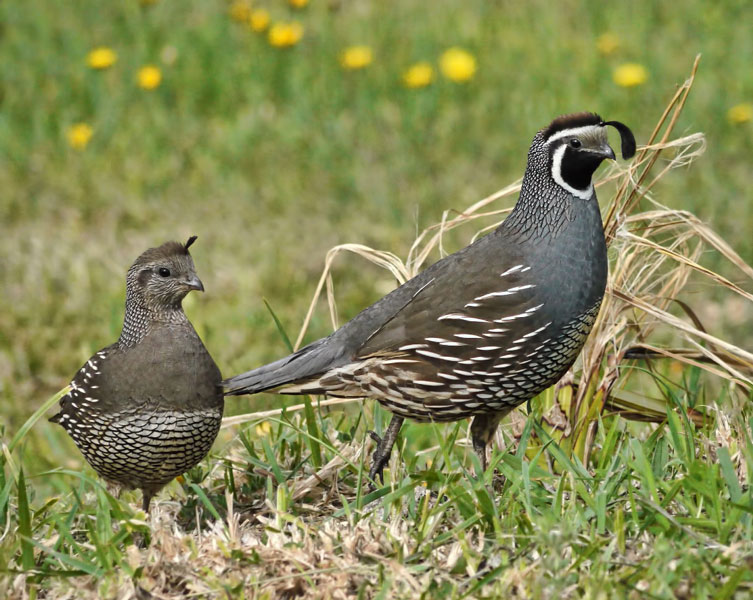
Native to western USA, Californian quails were introduced to New Zealand in 1862 as game birds. They eat many types of seeds and some fruits and leaves. Image © Sid Mosdell/wiki (CC BY-SA 2.0).
The damages of colonialism on island wildlife
Many island species have become threatened or extinct because of European colonisation from the mid-nineteenth century onwards.
Historically, many invasive species were intentionally transported by humans including goats, pigs, and cats, which caused immense damage.
Other movements were accidental, such as insects that may have hidden in bird feathers or animal fur, or rats that snuck aboard ships and escaped.
Border guidelines have become a lot stricter since. However, new species still make it to islands via trade, tourism and transportation, including cargo containers, unprocessed material such as timber and imported food.
Invasive species have always been a serious danger to island biodiversity and have already caused the extinction of hundreds of endemic island flora and fauna.
Rats are one of the worst culprits as they destroy everything in their paths. Island birds are particularly impacted by these rodents that devour their eggs and the defenceless young.
This results in fewer plant-animal interactions and seed dispersal, which means islands don't have the same quantity and diversity as they did pre-rat invasion.
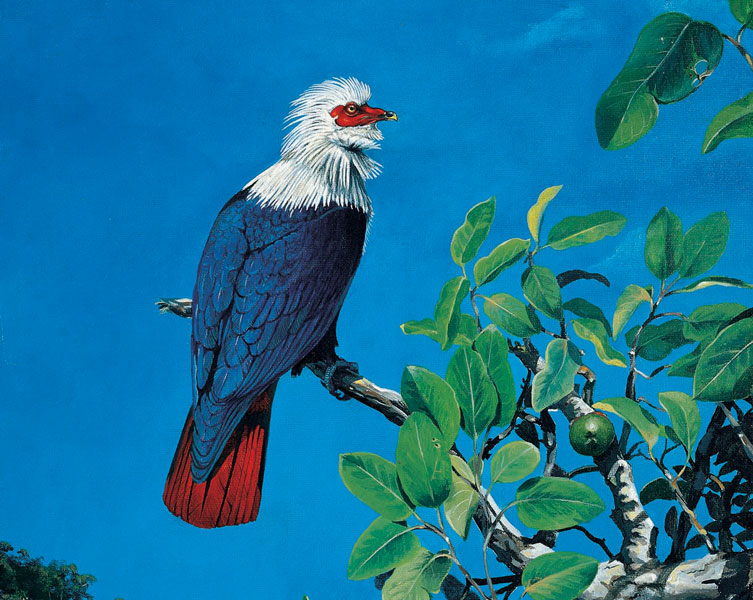
Mauritius was covered in woodland before the arrival of humans. The blue pigeon lived in forests alongside the dodo but became extinct in 1835 due to deforestation and predation by the invasive crab-eating macaque. Illustration © Julian Hume.
How can we retain biodiversity richness on islands?
Julian and colleagues are researching endemic birds - both existing and extinct - and their impact on seed dispersal on islands.
They found that, in some cases, the introduced seed predator birds filled the vacant niches left by extinct ones.
The most notable example is in New Zealand, where game birds such as the Californian quail have occupied the role left by the recently extinct New Zealand quail.
Introduced turkeys, ring-necked pheasants, guinea fowls and peacocks have also replaced the New Zealand moas, but to a lesser degree. Non-native parrots and finches are also seed predators and could potentially be useful, but may also compete with endangered native parrots for food resources.
On the Mascarene Islands, introduced ring-necked parakeets have taken the niche of the extinct Réunion fody, a small weaver finch and the endangered echo parakeet. The Madagascar turtle dove, spotted dove and zebra dove have also partially filled the niches of the extinct pigeons.
In Hawaii, three species of introduced cardinal and house finch have filled the niches of a few of the extinct finches.
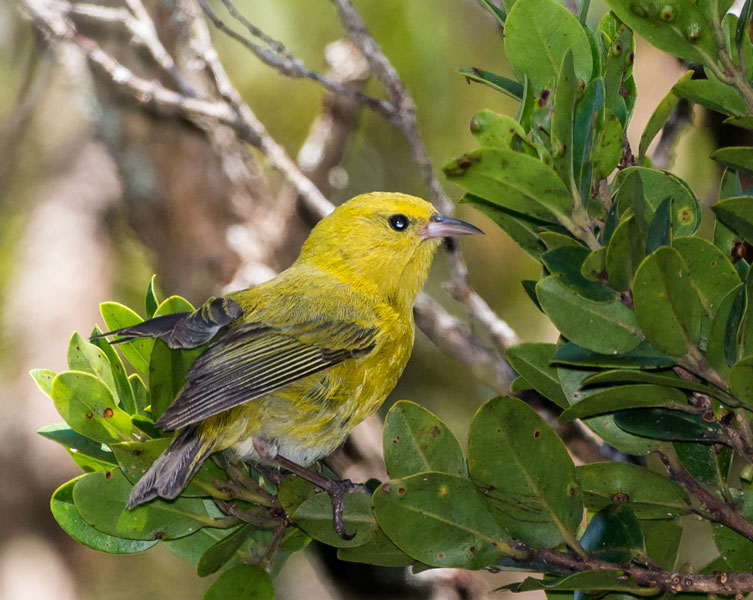
Hawaiian honeycreepers are a remarkable example of adaptive radiation. The small songbirds evolved from a single species of finch, which arrived at the islands millions of years ago. It diversified into over 50 new species, each donning its own brightly coloured plumage and uniquely shaped bills. © Byron Chin/Flickr (CC BY-NC-SA 2.0).
However, these examples are rare in the grand scheme of things, and most native seed predators have not been replaced. In fact, most introduced predators, particularly mammals, do little to promote seed dispersal and the regeneration of native plants and forests.
This is worrying as native island fauna are facing new predator pressure that they most likely won't be able to cope with and could eventually die out.
Julian says, 'What we're seeing is a decline in the way seeds are being dispersed and a loss of natural pollinators. This is resulting in a gradual decrease in native forests and plant diversity. Once they're gone, there will be a knock-on effect which has only just been realised.'
Julian and his colleagues' work is highly complex as it involves figuring out and catering for the interconnection between flora and fauna in magnificently prosperous yet fragile ecosystems.
The research aims to understand what seed predator pressures were present before the arrival of humans, highlight and compare the loss of seed predator diversity and emphasise possible outcomes of introduced seed predators when discussing conservation.
So it's not too late. Identifying a problem, particularly one that hasn't been noticed before, and predicting future events put researchers in a good position as it means work can be done to limit further damage.
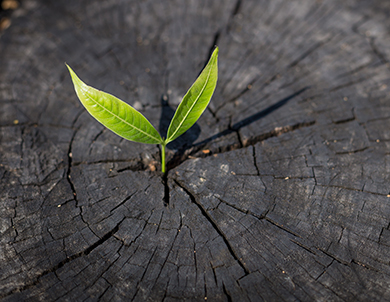
Protecting our planet
We're working towards a future where both people and the planet thrive.
Hear from scientists studying human impact and change in the natural world.
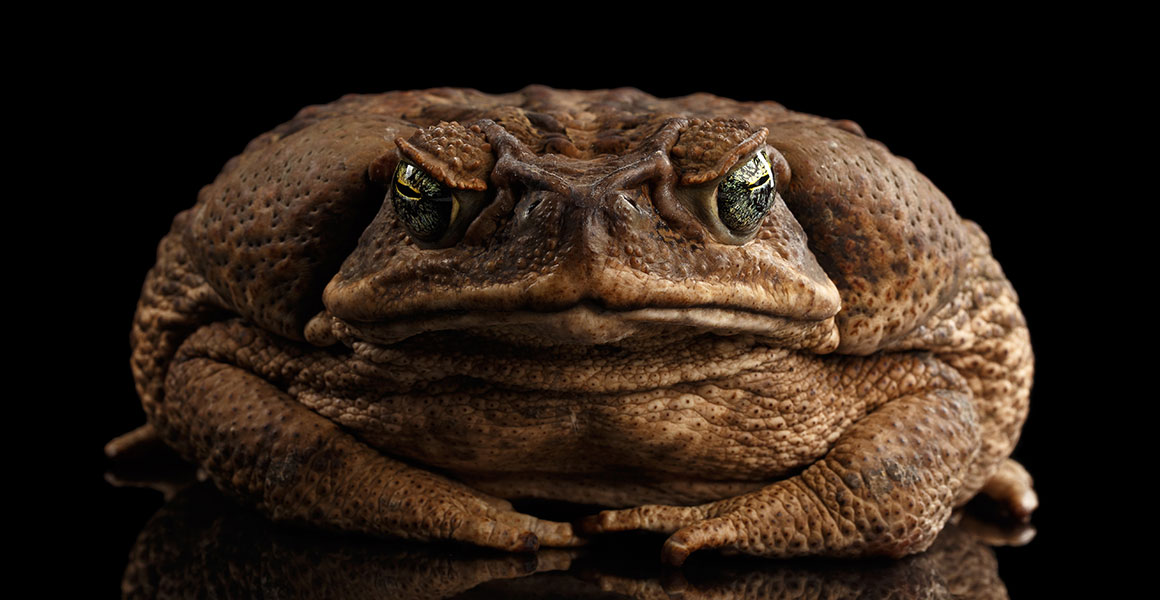

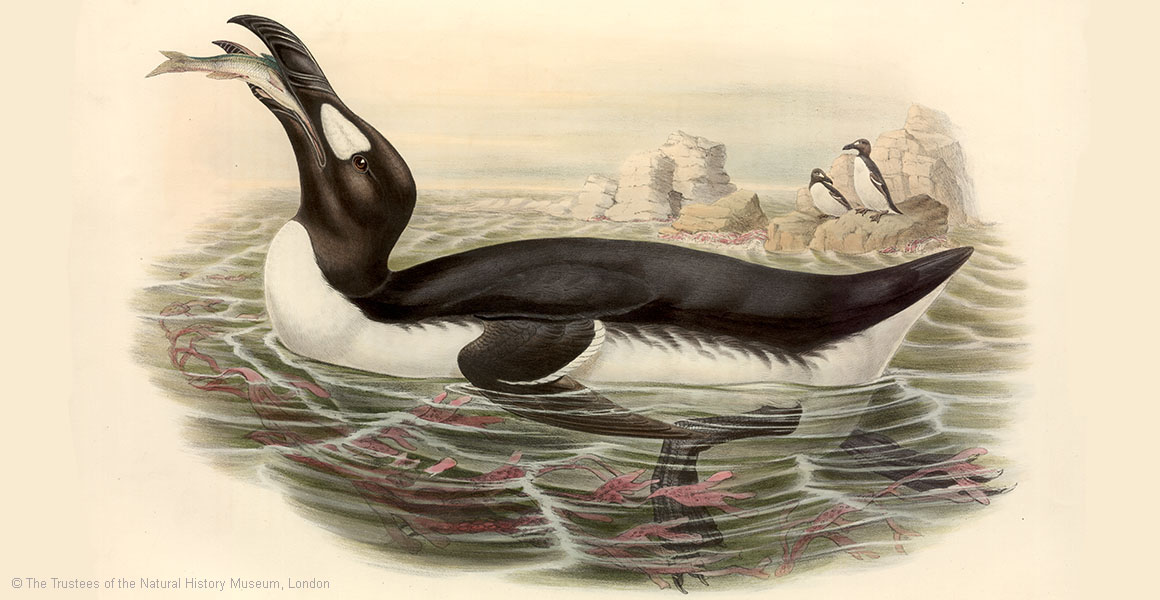
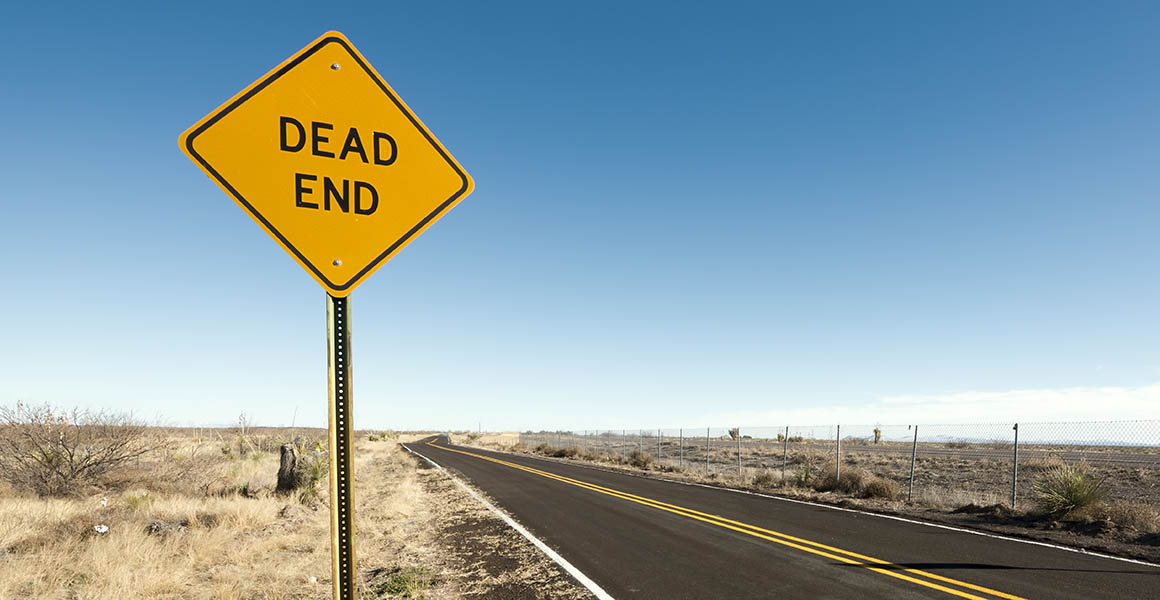
Don't miss a thing
Receive email updates about our news, science, exhibitions, events, products, services and fundraising activities. We may occasionally include third-party content from our corporate partners and other museums. We will not share your personal details with these third parties. You must be over the age of 13. Privacy notice.
Follow us on social media